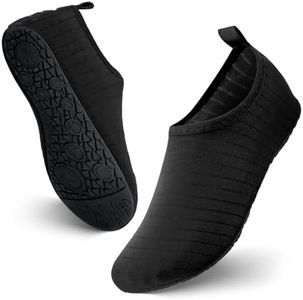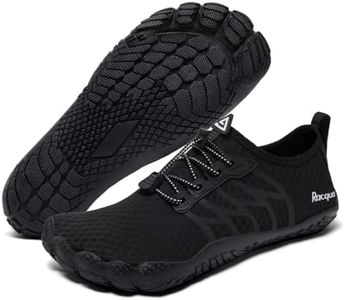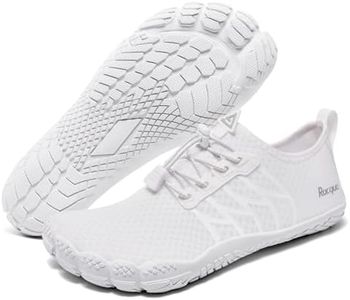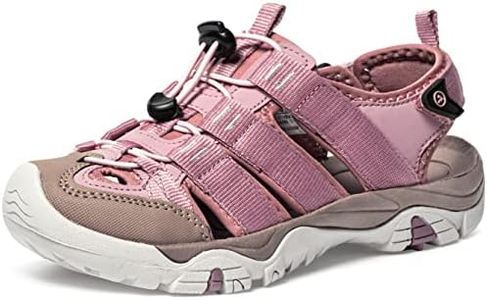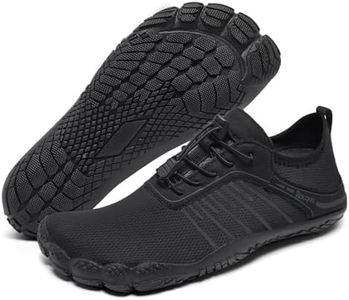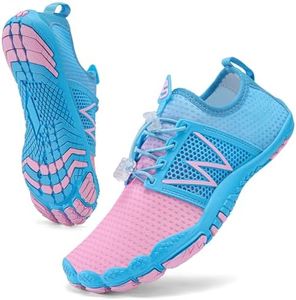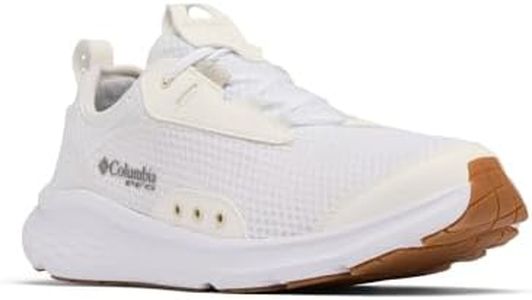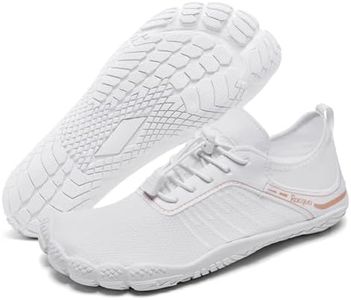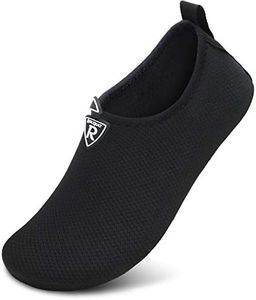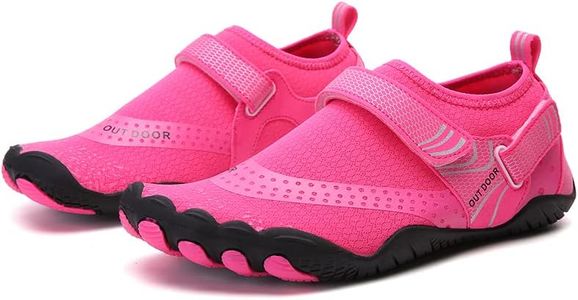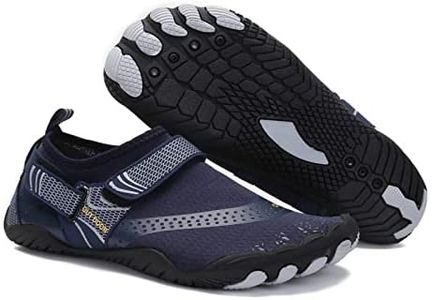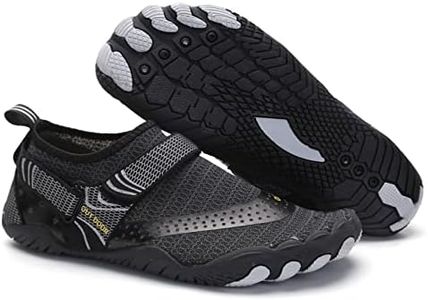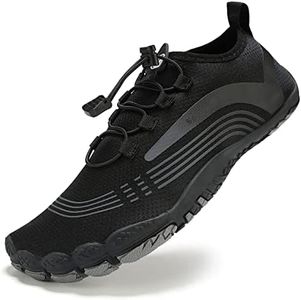We Use CookiesWe use cookies to enhance the security, performance,
functionality and for analytical and promotional activities. By continuing to browse this site you
are agreeing to our privacy policy
10 Best Kayaking Shoes
From leading brands and best sellers available on the web.Buying Guide for the Best Kayaking Shoes
Picking the right kayaking shoes is essential for comfort, safety, and performance both on and off the water. Good kayaking shoes protect your feet from sharp rocks or debris, keep your feet warm or cool as needed, and give you the grip you need in and out of your kayak. It's important to think about not just the paddling itself, but also walking along the shore or portaging your kayak. Consider when and where you plan to kayak most often to determine what features are most important for you. Here are the main things to consider:MaterialMaterials commonly used in kayaking shoes include neoprene, mesh, and rubber. Neoprene is popular because it provides insulation and keeps your feet warm in cold water, making it a great choice for cooler climates or seasons. Mesh lets water drain quickly and allows your feet to breathe, which is better for warm weather paddling. Rubber soles are important for giving you grip and protecting your feet on rocky shores or slippery surfaces. When you're trying to decide, think about where and when you'll use your shoes: go for more insulation with neoprene in chilly conditions and stick to mesh options when you want quick-drying, breathable shoes during summer.
Sole Thickness and GripThe sole of a kayaking shoe protects your feet and helps you walk safely on various surfaces. Thin, flexible soles give better feel and control in your kayak but may not protect you as much when walking over rocks. Thicker soles offer more protection, support, and grip, making them ideal if you'll be carrying your kayak over rough ground or walking long distances. For mostly paddling with little walking, a thinner sole is usually fine. If you expect to spend more time walking on uneven terrain or doing lots of launching and landing, look for shoes with a thicker, more rugged sole.
Fit and Closure TypeA secure fit keeps your shoes from slipping off in the water and helps prevent blisters. Some kayaking shoes slip on like socks, while others use straps, zippers, or laces for a tighter fit. Slip-on styles are usually simpler and less bulky, which is good for comfort inside the kayak, but may come off more easily. Straps, laces, and zippers help keep the shoes snug. If you often paddle in strong currents or rough water where losing a shoe would be a problem, choose a design that can be fastened tightly. Always try them on with the type of socks (if any) you'll wear while kayaking to make sure the fit is secure.
Drainage and Quick DryingKayaking shoes are bound to get wet, so it's important that they drain water easily and dry quickly. Shoes with built-in drainage holes or mesh panels allow water to escape and help your feet dry faster, reducing the risk of blisters or chafing. If you paddle in warm weather, prioritize shoes that drain well and dry fast. In colder environments, quick-drying is also useful, but make sure shoes still provide enough insulation to keep your feet warm.
Height (Low-cut vs. High-cut)Some kayaking shoes are low-cut like slip-on water socks, while others come up over the ankle for added protection and warmth. Low-cut shoes are lighter and easier to slip on and off, which is great for casual paddling in warm conditions. High-cut shoes cover the ankles and sometimes part of the calf, giving extra warmth and blocking out sand or debris, which is useful in cold water, rocky areas, or for longer trips. Choose a height that matches the conditions you’ll most often encounter.
